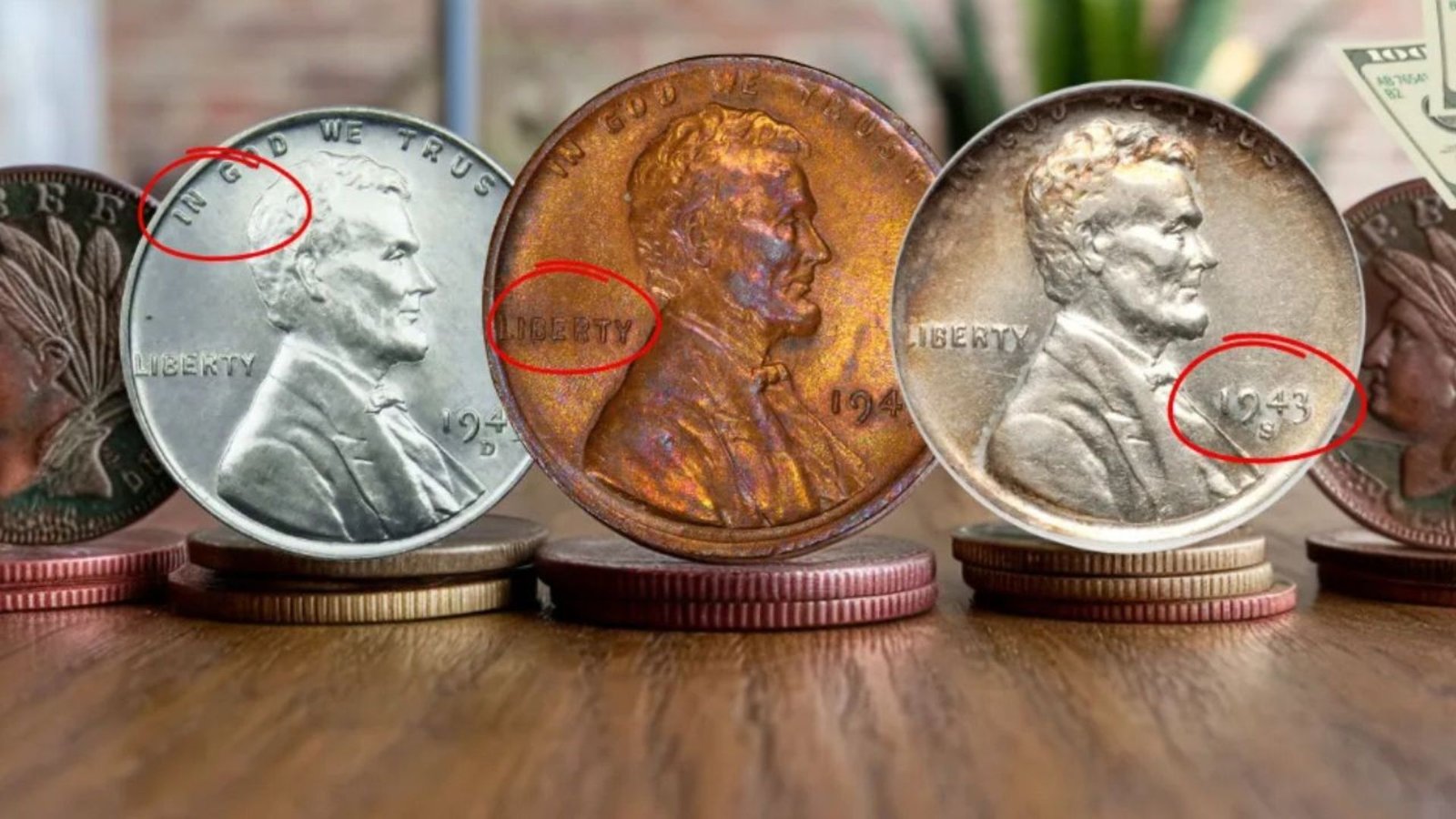Ever found a penny in your pocket and wondered if it’s worth more than a cent? Some rare steel wheat pennies from the 1940s could be your ticket to millions! These tiny treasures, minted during World War II, are collector’s gold due to unique errors. Read on to discover five rare pennies that could change your life.
What Are Steel Wheat Pennies?
Steel wheat pennies are Lincoln cents minted in 1943, featuring Abraham Lincoln on the obverse and wheat stalks on the reverse. Unlike typical copper pennies, these were made of zinc-coated steel due to wartime copper shortages. Rare errors, like pennies struck on copper planchets, make some worth a fortune.
The History of Steel Wheat Pennies
In 1943, World War II demanded copper for military use, so the U.S. Mint switched to steel for pennies. Designed by Victor D. Brenner, these coins have a shiny, silver-like look. A few copper pennies were accidentally minted, creating some of the rarest coins in numismatic history.
Why These Pennies Are Valuable Today
Certain 1943 and 1944 pennies are prized for minting errors, like being struck on the wrong metal. These rarities, especially in top condition, fetch millions at auctions. Collectors hunt them for their historical significance and scarcity, making them a hot topic in the numismatic community.
How to Spot a Million-Dollar Penny
Want to find a rare penny? Check your change or old coin jars! Here’s what to look for:
- Year and Mint Mark: Focus on 1943 or 1944 pennies with “D” (Denver) or “S” (San Francisco) mint marks.
- Material: Use a magnet—steel pennies stick, copper ones don’t.
- Errors: Look for doubled text on the date or “LIBERTY” (Double Die errors).
- Condition: Uncirculated coins with no scratches are worth more.
If you suspect a rare find, don’t clean it—cleaning reduces value. Get it appraised by professionals like PCGS or NGC.
Notable Records and Auction Prices
Some steel wheat pennies have shattered auction records. Here’s a look at five rare variants and their jaw-dropping values:
| Coin Type | Year | Composition | Mint Mark | Estimated Value |
|---|---|---|---|---|
| 1943 Copper Wheat Penny | 1943 | Copper | None/S/D | Up to $1.7M |
| 1943-D Bronze Wheat Penny | 1943 | Bronze | D | Over $1.4M |
| 1943-S Copper Wheat Penny | 1943 | Copper | S | $500,000+ |
| 1944 Steel Wheat Penny | 1944 | Steel/Zinc | None/S/D | $75,000–$1.2M |
| 1943 Double Die Penny | 1943 | Steel | None | Up to $500,000 |
Table: Top 5 Rare Steel Wheat Pennies and Their Values
Expert Tips for Coin Collectors
New to numismatics? Here’s how to start your rare penny hunt:
- Check Everywhere: Look in coin jars, flea markets, or inherited collections.
- Use Tools: A magnifying glass helps spot errors like doubling.
- Authenticate: Always verify with a grading service to avoid fakes.
- Join Communities: Connect with numismatic groups online or locally for tips.
| Tip | Benefit |
|---|---|
| Use a Magnifying Glass | Spots tiny errors like doubling |
| Avoid Cleaning Coins | Preserves value for appraisal |
| Join Coin Clubs | Learn from experienced collectors |
| Check Mint Marks | Identifies rare variants |
Frequently Asked Questions
Q: How do I know if my 1943 penny is rare?
A: Check if it’s copper, not steel—use a magnet. Copper pennies don’t stick. Look for mint marks and errors.
Q: What’s the most valuable steel penny?
A: The 1943-D Bronze penny, with one sold for over $1.4 million.
Q: Can I find these in circulation?
A: It’s rare but possible—check old collections or pocket change.
Q: How do I authenticate a penny?
A: Take it to a grading service like PCGS or NGC for professional evaluation.
Conclusion
Rare steel wheat pennies are more than pocket change—they’re numismatic treasures that could make you a millionaire! From the 1943 Copper to the 1944 Steel, these coins tell a story of wartime innovation and minting mistakes. Grab a magnifying glass, check your coins, and join the hunt. Share this post with fellow collectors, and let us know if you’ve found a rare penny!

